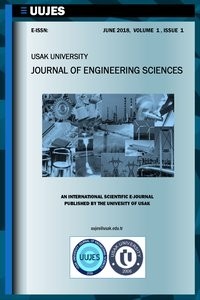An Investigation on Recycling of Blanket Trimmings Through Needle-punched Nonwovens
An Investigation on Recycling of Blanket Trimmings Through Needle-punched Nonwovens
Utilization of recycled fibers in nonwovens has been an attractive issue for researchers considering environmental and economic benefits. In this study blanket trimmings and mechanically recycled fibers were blended and softly needle-punched to be used as interlayers of traditional needle-punched nonwovens. The outer layers from polypropylene (at four different mass per unit areas), from recycled polyester (at four different mass per unit areas), from mechanically recycled fibers (at three mass per unit areas) and the control groups were produced by classical needle-punching at two needle-punch densities. The recycled interlayers consisting of blanket trimmings and mechanically recycled fibers and are then fixed by needle-punching again, between the two twin layers of needle-punched nonwovens of those three types of raw materials. Control groups did not include the recycled interlayers. Hence, three layered end products were obtained. Tensile characteristics of the end products were evaluated in terms inter layer ratio of the end products, raw material type of outer layers and needle-punching density through standard test methods. The results were statistically analyzed in SPSS 23.0-One way ANOVA. In the conclusion, blanket trimmings were successfully entangled to the end products as interlayers and it was observed that the strength of the nonwovens decrease with the higher recycled interlayer ratio and increase with needle-punch density.
Keywords:
recycling, blanket trimmings, nonwovens needle-punching, tensile strength,
___
- 1. T.C Çevre ve Şehircilik Bakanlığı, Atık Yönetimi Yönetmeliği, Resmi Gazete Sayı 29314, 2 Nisan 2015
- 2. Tekirdağ Valiliği Çevre ve Şehircilik İl Müdürlüğü, Atık yönetiminde geri kazanım uygulamaları, 14 Şubat 2012
- 3. Eser, B.,Çelik, P., Çay, A., Akgümüş, D., 2016,“Tekstil ve konfeksiyon sektöründe sürdürülebilirlik ve geri dönüşüm olanakları”, Tekstil ve Mühendis, 23 (101):43-60.
- 4. Radetić, M. M.,Jocić, D. M., Jovančić, P. M., Petrović, Z. L., Thomas, H. F. 2003, “Recycled wool-based nonwoven material as an oilsorbent”, Environmentalscience&technology, 37(5), 1008-1012.
- 5. Sakthivel, S.,EhzilAnban, J. J., Ramachandran, T., 2014, “Development of needlepunchednonwovenfabricsfromreclaimedfibersforairfiltrationapplications”. Journal of EngineeredFibersandFabrics, 9(1), 149-154.
- 6. Kut, D., Orhan, M., 2004, “Farklı geri kazanım oranları ile iğneleme yöntemi kullanılarak üretilen polipropilendokusuz yüzeylerin fiziksel özelliklerinin araştırılması”, Tekstil Maraton, 2, 49-55.
- 7. Sakthivel, S.,Ramachandran, T., 2012,“Thermal conductivity of non-woven materials using reclaimed fibers”., International Journal of Engineering Research and Applications (IJERA), 2(3), 2986. 8. Lin, J. H., Lin, C. M., Kuo, C. Y., Lin, C. W., Hsieh, C. T., Lou, C. W., 2010, “Manufacture technology of novel reinforcing composite geotextile made of recycled nonwoven selvages”,Advanced MaterialsResearch, 123, pp. 137-140
- 9. Lin, J. H.,Li, J. H., Hsieh, J. C., Hsing, W. H.,Lou, C. W., 2015,“Physical properties of geotextiles reinforced by recycled kevlar selvages”, AppliedMechanicsandMaterials, 749, 295-298.
- 10. Sharma, R.,Goel, A., 2017, “Development of nonwoven fabric from recycled fibers”. Journal of Textile Science and Engineering, 7, 289-292. 11. Wang, Y.,Zhang, Y., Polk, M., Kumar, S., Muzzy, J,. 2003, “Recycling of carpet and textile fibers”. Plasticsandthe Environment, 697-725.
- 12. Parikh, D. V.,Sachinvala, N. D., Chen, Y., Sun, L., Bhat, G., Ramkumar, S., 2006,“Acoustic Properties of Environmentally Benign Automotive Natural Fiber Composites”. AATCC review, 6(1).43-48.
- 13. Leon, A. L.,Potop, G. L., Hristian, L., &Manea, L. R., 2016, “Efficient technical solution for recycling textile materials by manufacturing nonwoven geotextiles”IOP Conference Series: Materials Science and Engineering , 145, (2), 022022.
- 14. Gorchakova, V. M.,Kuchkovskaya, A. B., Izmailov, B. A., 2013,“Influence of organosilicon modifiers on the properties of recycled polyester fibers and geotextile non-cloth materials”. Fiber Chemistry, 45(4), 214-216.
- 15. Rawal, A.,Anandjiwala, R., 2007,“Comparative study between needlepunched nonwoven geotextile structures madefrom flax and polyester fibers”, Geotextiles and Geomembranes, 25(1), 61-65.
- 16. Rawal, A.,Saraswat, H., 2011,“Stabilisation of soil using hybrid needlepunched nonwoven geotextiles”. Geotextiles and Geomembranes, 29(2), 197-200.
- 17. Lin, J. H.,Hsieh, J. C., Li, J. H., Hsing, W. H., Lou, C. W., 2014,“Effects of needle-punch depth on properties of PET/LPET/Kevlar nonwoven geotextiles”,Advanced Materials Research, 910, 266-269.
- 18. Bulacu, R.,Farima, D., Ciıcoiu, M.,Barbu, I.,2015, “Geotextiles from recycled fibers”.Annals Of The University Of Oradea Fascicle Of Textiles, Leatherwork
- 19. Broda, J., Rom, M., Grzybowska-Pietras, J., Przybylo, S., Laszczak, R., 2016, “Application of textile wastes for the production of innovative geotextiles designed for erosion control”. Tekstil: Journal of Textil & Clothing Technology, 65 (5-6), 222-226.
- 20. Fangueiro, R.,Carvalho, R., Soutinho, H. F. C., 2011,“Mechanical properties of needle-punched nonwovens for geo technical applications”,International Conference on Engineering–ICEUB, Portugal.
- 21. T.C. Ekonomi Bakanlığı, Ekonomik Araştırmalar ve Değerlendirme Genel Müdürlüğü, Uşak İl Raporu, Nisan 2017
- 22. Zafer Kalkınma Ajansı, 2019, Uşak İli Tekstil Geri Dönüşüm Sektör Raporu.
- 23. İnternet: http://www.weardonaterecycle.org/about/index.html, [Erişim tarihi, 26 Ocak 2018]
- 24. Yalçın, İ., 2010, “Kompozit inşaat tekstili tasarımı ve performansının incelenmesi, Yüksek Lisans Tezi, İstanbul Teknik Üniversitesi Fen Bilimleri Enstitüsü,İstanbul.
- 25. Bhatia, D.,Sharma, A., Malhotra, U., 2014, “Recycled fibers an overview”. International Journal of Fiber and Textile Research, 4(4), 77-82.
- 26. Altun, Ş.,“Tekstil üretim ve kullanım atıklarının, geri kazanımı, çevresel ve ekonomik etkileri”,Uşak Ticaret ve Sanayi Odası Raporu,2016.
- 27. TS EN 29073-3Textiles-Test Methods For Nonwovens Part 3- Determination Of Tensile Strength and Elongation
- Başlangıç: 2018
- Yayıncı: Uşak Üniversitesi
Sayıdaki Diğer Makaleler
An Investigation on Recycling of Blanket Trimmings Through Needle-punched Nonwovens
Optimised Surface Condition Classification of Flexible Road Pavement Using AutoWEKA Model
Paul Terkumbur ADEKE, Aper ZAVA, Manasseh TYOGO
Effects of Fabric Composition and Construction on the Performance Properties of the Worsted Fabrics
Duygu AYAKTA, Sezin İLARSLAN ÇELİKKIRAN, Eren ONER
Gülşah SUSURLUK, Yüksel İKİZ, Erkan TURKER
Monitoring of Burn Damage Occurrence under Different Grinding Conditions Using Acoustic Emission
Evaluation of Electric Power Plants and Production Capacity in Turkey
